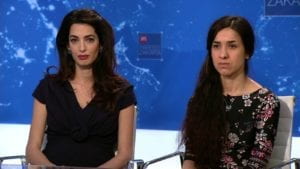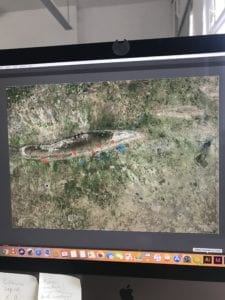Michael Reynold Zalta
Forensic Architecture
London, United Kingdom
A few weeks ago at Forensic Architecture, all members of the project participated in a “trauma workshop” meant to provide necessary tips and resources for people working with traumatic or sensitive materials. As much of the team is comprised of forensic researchers from various disciplinary backgrounds working on investigations that involve repeated exposure to very traumatic media, it was really interesting to hear my colleagues engage and open up about the challenges of their work.

As a dramatic writer interested in how representation can influence general understandings of violence waged against vulnerable populations around the globe, the workshop really got me thinking about the role of the artist, advocate, human rights worker, and international lawyer in relationship to the work or claims he/she/they produce.
Roland Barthes once claimed that “traumatic images are bound with an uncertainty (an anxiety) concerning the meaning of objects or attitudes. Hence in every society various techniques are developed [that are] intended to fix the floating chain of signifieds in such a way as to counter the terror of uncertain signs” (39) . Frankly, I read this quote as it was cited by Talal Asad in his critical work on terrorism and suicide bombings after 9/11 (30). However, the quote stuck with me because it made me begin to realize how susceptible the domain of visuality is to facile explanations, to being hijacked by politicians who produce easy, brash solutions to complex, deeply traumatizing, and shattering issues. Barthes uses a passive voice to explain how techniques are developed, as if those who develop media techniques are anonymous culprits who often explain away one “terror” by producing another.
Reading Barthes back to myself in light of what FA does makes me really proud to be a part of a team of people who sit with often-traumatic material, who give themselves the space and time they need to feel safe and secure, and who ultimately develop a new set of tools for seeing and exposing what might make something traumatic or violent.
In the ongoing investigation into the Yazidi Genocide, which I am currently working on, I often find myself struggling to explain how reconstructing sites of destruction is something more than an aesthetic project. As conflict in Syria and Iraq prevents state officials from officially recognizing the ISIS assault and genocide as a war crime, and as the UN cannot create a provisional international crimes court in the area, much of the work I am helping with today will not serve as actionable evidence for an international prosecution until perhaps a few years from now.

Nevertheless, I am now coming to realize that despite the grueling images we encounter and the painful testimonies we hear, the methods we are employing to look at, represent, and present those traumatic stories is integral to the future of human rights practice and, by extension, to hopefully working toward an end to state violence. The techniques we actively produce do not make things simpler, more comfortable, or less frightening, but they do call for new forms of recognition of the shared humanity between all who do or do not suffer under state or genocidal violence.
Works Cited:
Asad, Talal. On Suicide Bombing. Columbia University Press, 2007.
Barthes, Roland, and Stephen Heath. Image-Music-Text: Roland Barthes. Collins, 1977.